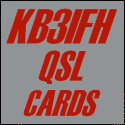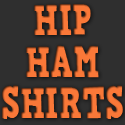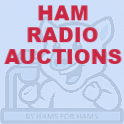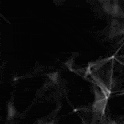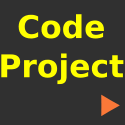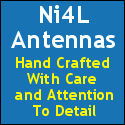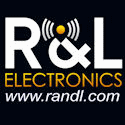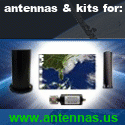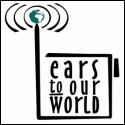Posts Tagged ‘ham radio’
 24 December to 31 December: 1st Ever Winter Olivia Digital Mode QSO Party
24 December to 31 December: 1st Ever Winter Olivia Digital Mode QSO Party
Special Event Week: Dec 24-Dec 31, 2023
The 1st annual Olivia Digital Mode on HF Winter QSO Party, celebrating 20 years of Olivia.
The Olivia Digital DXers Club (we’re on ClubLog!) is holding the first annual Winter Olivia Digital Mode on HF QSO Party, starting at 00:00 UTC, 24 December 2023, and ending at 23:59 UTC, 31 December, 2023.
Minimum logging requirements: Callsign worked, Band (or Frequency), Mode (I.e., Olivia 8/250, or other variations), Time QSO Started. You can log more than that, but for the sake of the certificate, please send at least the minimum information per QSO, to NW7US (email is on QRZ profile). Logs can be any common method, from an .ADI file, to a screen shot.
Full details are on our website:
https://OliviaDigitalMode.org
Olivia, a Multi-Frequency Shift Keying (MFSK) radioteletype digital mode, is an amateur radioteletype protocol designed to work in difficult (low signal-to-noise ratio plus multipath) propagation conditions on shortwave radio (i.e., high-frequency, or HF) bands. The typical Olivia signal is decoded when the amplitude of the noise is over ten times that of the digital signal!
Here is an introduction to the Olivia digital mode:
73 de NW7US
 Better Than FT8? Olivia Digital Chat Mode – Raleigh Amateur Radio Society Video
Better Than FT8? Olivia Digital Chat Mode – Raleigh Amateur Radio Society Video
Olivia is the digital communications mode on shortwave (high frequency sub band, or, HF) for amateur radio operators who want more than the “Check Propagation” FT8 mode. This video is an introduction that was presented to the Raleigh Amateur Radio Society ( https://www.rars.org/ ) on December 12, 2023, presented by Tomas Hood, NW7US
Olivia information can be found, here:
https://OliviaDigitalMode.org
Olivia, a Multi-Frequency Shift Keying (MFSK) radioteletype digital mode, is an amateur radioteletype protocol designed to work in difficult (low signal-to-noise ratio plus multipath) propagation conditions on shortwave radio (i.e., high-frequency, or HF) bands. The typical Olivia signal is decoded when the amplitude of the noise is over ten times that of the digital signal! It is commonly used by amateur radio operators to reliably transmit ASCII characters over noisy channels (slices of high-frequency spectrum — i.e., frequencies from 3 MHz to 30 MHz; HF) exhibiting significant fading and propagation phasing.
The Olivia digital modes are commonly referred to by the number of tones and the bandwidth used (in Hz). Therefore, it is common to express the Olivia digital mode as Olivia X/Y (or, alternatively, Olivia Y/X ), where X refers to the number of different audio tones transmitted, and Y refers to the bandwidth in Hertz over which these signals are spread. Examples of common Olivia modes are, 8/250 (meaning, 8 tones/250-Hertz bandwidth), 16/500, and, 32/1000.
The protocol was developed at the end of 2003 by Pawel Jalocha. The first on-the-air tests were performed by two radio amateurs, Fred OH/DK4ZC and Les VK2DSG, on the Europe-Australia propagation path in the 20-meter shortwave radio amateur band. The tests proved that the Olivia protocol (or, digital mode) works well and can allow regular intercontinental radio contacts with as little as one-watt RF power (when propagation is highly-favorable). Since 2005, Olivia has become a standard for digital data transfer under white noise, fading and multipath, flutter (polar path) and auroral conditions.
Olivia can perform nearly as good as the very popular WSJT mode, FT8, and better than FT4.
See you on the waterfall!
73 de NW7US
 1st Ever: August Olivia Digital Mode QSO Party Weekend – Aug 11-14 2023
1st Ever: August Olivia Digital Mode QSO Party Weekend – Aug 11-14 2023
Announcement:
OLIVIA DIGITAL MODE AUGUST 2023 QSO PARTY
Dates: August 11, 12, 13, 14 UTC
These are UTC dates,
starting at 00:00 UTC on first date, and,
ending at 23:59:59 UTC on last date

Our August Olivia QSO Party Weekend is published in QST!

On Facebook, the event link is: https://www.facebook.com/events/1332228534167891/
For full information about using Olivia, please visit our Groups dot io Olivia Group:
What is unique about THIS particular QSO party?
Olivia is the digital (HF) protocol developed at the end of 2003 by Pawel Jalocha. This is the 20th Year Anniversary QSO party by the Olivia Digital DXers Club (we’re on Clublog).
Using UTC (GMT), starting at 00:00 UTC, August 11, through 23:59:59 UTC, August 14, 2023 – Olivia on the HF bands. Chat is encouraged, not the number of contacts, but the quality…
We will issue PDF certificates, after you send your ADIF log to NW7US (see QRZ dot com for email address for NW7US).
Those of you interested in the Olivia Digital Mode on HF (Amateur Radio Chat mode), we have a live Discord server for live spotting, etc. Here is the Discord chat: https://discord.gg/yktw8vC3HX
Our email reflector is: http://OliviaDigitalMode.org
ABOUT OLIVIA DIGITAL MODE ON HF
Below are suggested frequencies on which can be found Olivia signals (note: Olivia is a weak-signal mode, NOT a low-power mode). While it is easy to spot a STRONG Olivia signal anywhere on the waterfall, by using these suggested calling frequencies at least once and a while, you will enable us to find your signal when the signal is too weak to hear and too faint to see on the waterfall.
Olivia can do well with weak signals. Yes, our suggested 8 tone with 250 Hz bandwidth results in slow transmissions. But it is one of the better settings when attempting to decode very weak signals. Once you make contact, you can move up or down a bit, away from the calling frequency, and then change to 16/500 to make the conversation go faster. But, on a calling frequency, it is advisable to configure operations in such a way as to increase the likelihood that you will find and decode that weak signal.
In the following list, CENTER is where you place the center of the software’s cursor, and click to select that center frequency on the waterfall. If you use the DIAL frequency from this list, then click 1500 Hz offset up the waterfall (1500 Hz to the RIGHT of the LEFT side of the waterfall, if your waterfall is oriented horizontally with the lowest frequency on the left). This results in the software and transceiver being correctly tuned for the CENTER frequency.
The listing shows CENTER, then DIAL, then the number of tones and the bandwidth.
CENTER DIAL Tones/Bandwidth (Notes) 1.8390 MHz 1.8375 MHz 8/250 (ITU Region 1, etc.; Primary International) 1.8270 MHz 1.8255 MHz 8/250 (ITU Region 2; Secondary) 3.5830 MHz 3.5815 MHz 8/250 7.0400 MHz 7.0385 MHz 8/250 (ITU Region 2, etc., Primary International) 7.0730 MHz 7.0715 MHz 8/250 (Secondary) 10.1430 MHz 10.1415 MHz 8/250 10.1440 MHz 10.1425 MHz 16/1000 (Potential - be mindful of other stations) 14.0730 MHz 14.0715 MHz 8/250 14.1075 MHz 14.1060 MHz 32/1000 18.0990 MHz 18.0975 MHz 8/250 21.0730 MHz 21.0715 MHz 8/250 24.9230 MHz 24.9215 MHz 8/250 28.1230 MHz 28.1215 MHz 8/250
REMEMBER THAT IF YOU USE THE DIAL FREQUENCY (THE SECOND FREQUENCY PER ROW), SET YOUR WATERFALL CENTER AT 1500 Hz)
Join us on Facebook at https://www.Facebook.com/groups/olivia.hf
Join us on Groups.io via http://OliviaDigitalMode.net
ALSO: If your software is able to decode/encode the Reed-Solomon Identification signals (RSID), please turn on both received and transmit RSID. An example is shown in the following video, which demonstrates enabling RSID in a popular software suite: https://www.youtube.com/watch?v=lBIacwD9nNM
Please share this everywhere possible, as part of our effort to rekindle the love for our conversational mode, Olivia.
73 de NW7US
..
 Skip Hamvention 2023, Go To ICU in Dayton
Skip Hamvention 2023, Go To ICU in Dayton
I had so many plans for my Hamvention 2023 visit on Friday and Saturday, May 19-20, 2023. For example, I planned on many interviews including one with N3ZN, maker of great Morse code keys. I also needed to visit the Card Checker Service of the ARRL DXCC program. I had a handful of DX cards I was submitting toward DXCC credits.

NW7US, in ICU at the hospital, instead of attending Hamvention 2023.
But, I collapsed about 40 minutes after I got to the Hamvention, on Friday morning! I had just finished getting my DX QSL cards checked at the ARRL booth, then I collapsed. After only being at my first Hamvention for a brief 40-some minutes, I was taken by ambulance to an ER of a Xenia-area hospital. My blood pressure was difficult to measure at the initial moments of being at the emergency room — it was about 60 over 40, and I had NO radial pulse.
After a CT scan of heart and neck, and blood lab work, I was transported again by ambulance to a hospital near Dayton. There, I was admitted to that hospital’s Intensive Care Unit (ICU) around 5:30 PM on Friday.
I’m writing this on Saturday, from my hospital bed, as I’m still in ICU in Dayton. I hope to be discharged tomorrow (Sunday, 21 May 2023).
The working diagnosis is Acute Kidney Injury (AKI), caused by a combination of issues starting with my parathyroidectomy surgery, a few months back. I had three of my four parathyroid glands removed because they were completely tumorous. I wrote about that in my previous entry on this website.
Turns out my calcium levels were lower than they should be, causing problems throughout my body, but especially in my heart. Additionally, I was severally dehydrated due to two medications I had been taking because the VA doctors thought I should be on them. But, these meds were working against me. One of those I don’t even need, but the VA had me taking. That one is FUROSEMIDE. The other is LISINOPRIL. I don’t have high blood pressure, nor water retention.
At the ICU, I have stopped taking those meds. I’m on an IV, getting hydrated, and getting calcium supplements.
My kidney function is improving but I’m going to spend another night in ICU until they feel confident I’ve made full recovery. I hope to be discharged on Sunday, 21 May, 2023.
I hope all of you that were at this year’s Hamvention have enjoyed the fellowship of radio enthusiasts. Maybe I’ll meet many of you, next year! I will make videos of Hamvention 2024, if all goes well in a year’s time.
If you were at Hamvention 2023, share some highlights in the comments!
UPDATE: On Sunday, I was released from the ICU, and I am now home recuperating. Monday is a bit rough, so am not at work, yet. BP is normal, and I am on new medication for my heart so that I do not get dehydrated by the furosemide and lisinopril. Here’s hoping for next year’s Hamvention, which I hope to attend.
73 de NW7US
https://nw7us.us
..
 International Morse Code Day (April 27)
International Morse Code Day (April 27)
Morse Code Day on April 27 (every year) honors one of the inventers of the Morse code, Samuel Morse, who was born on this day in 1791.
Samuel Finley Breese Morse (April 27, 1791 – April 2, 1872) was an American inventor and painter. After having established his reputation as a portrait painter, in his middle age Morse contributed to the invention of a single-wire telegraph system based on European telegraphs. He was a co-developer of Morse code and helped to develop the commercial use of telegraphy.
Alfred Vail developed the dot-dash structure, and Leonard Gale along with Vail was instrumental in developing the mechanical receiving apparatus for code.
Samuel Morse gets most of the credit because of his work in promoting this code as a viable means of communication. Morse code is still used now. Amateur radio is one of the communities in which Morse code is popular and in daily use.
73 de NW7US dit dit
https://NW7US.us
..
 I Am Back After Life Distractions
I Am Back After Life Distractions
The last three years have been, well, challenging.
In 2021, I became ill with Covid. That was rough, but I bounced back. That bout with illness caused me to lose my job, though, because I was ill too long. What is worse is because I was not hospitalized, I did not fall under the protections of “disability,” and had to step down from my employment at that time. After I recovered, I found employment.
In 2022, I again fell ill to a second Covid. That illness was significantly worse! I nearly WAS hospitalized, but I resisted this, and hung on by a thread. I made it through, though the illness lasted a lot longer the second time around. Because I was ill for about five months, I again had to step down from employment. This second Covid was the worst illness I have ever experienced, physically, emotionally, and financially. I am thankful for my friends and family that were very supportive.
After I recovered, I found employment in late 2022. It took a while for my health to stabilize, but the new job leadership has been supportive. I have been happily working at this new job since late 2022.
But, the challenge to recover was high. I sought answers.
In December 2022, I was diagnosed with Primary Hyperparathyroidism. Sure enough, the many tests I endured confirmed that I had more than one tumor in at least two of my four parathyroid glands (we each have four of them, because we’re given redundancy for this critical body part).

We each have four parathyroid glands. They are on the back side of the thyroid. The regulate the body’s calcium. Calcium is critical to all body functions and health.
I had surgery at the end of February 2023 to remove these tumor-riddled glands. The surgeon, once in my neck, found that THREE of my four glands were tumorous! He removed the three. I now have just one parathyroid gland.
Recovery has gone well. My health is improving nicely. It is like a switch was flipped, and I no longer have some of the debilitating symptoms like brain fog, extreme fatigue, and an out-of-control metabolism. I have a stable function of the remaining parathyroid gland, and that is supporting the proper function of the rest of my body. It is amazing how the whole body relies on these four glands for running correctly!
All of these challenges of the last few years caused enough distraction that my YouTube channel, and my writing, here, as well as other hobby activities, suffered my absence. Now that I am getting back on my feet with my health, and because my job continues nicely, I am beginning to spend some energy and time on these hobby areas. I plan on creating and releasing a few series on amateur radio, radio propagation, and space weather, on my YouTube channel. If you are already a subscriber, you probably saw my latest video where I announce that I am, indeed, back:
If there are topics that you would like me to cover in the new educational videos I am planning and will create, please let me know with a comment to this post, or, look my email address up on my profile at QRZdotCom. I will do my best to answer your questions and cover amateur radio and space weather topics in which you are interested.
If you are not yet familiar with my YouTube channel, you can find my channel here: https://YouTube.com/NW7US — Please subscribe and hit the bell to be notified when I release new video content.
I will also post more often on this site. I appreciate the opportunity to share with you my love of amateur radio, and the science of propagation and space weather which affects our radio signals.
Best regards,
Tomas, NW7US
https://NW7US.us
 Winter Field Day 2023 (Jan 28, 29 UTC)
Winter Field Day 2023 (Jan 28, 29 UTC)
Join the Winter Field Day!
You do NOT have to operate from a cold location; home operation is an allowed category.
Winter Field Day is a communications exercise. WFD is held on the last full weekend in January. WFD can be worked from the comfort of your home or in a remote location. You can participate by yourself or get your friends, family, or whole club involved. Winter Field Day is open to participants worldwide. Amateur radio operators may use frequencies on the HF, VHF, or UHF bands and are free to use any mode that can faithfully transmit the required exchange intact. Similar to the ARRL’s Field Day, bonus points are earned in several ways, including using non-commercial power sources, operating from remote locations, satellite contacts, and more.
Winter Field Day is sponsored by the Winter Field Day Association. We passionately believe that Ham radio operators should practice portable emergency communications in winter environments as the potential for freezing temperatures, snow, ice, and other hazards present unique operational concerns. WFD is formatted to help increase your level of preparedness for disasters and improve your operational skills in subpar conditions. Click here to read more about the history and purpose of winter field day.
Do check out the rules, as there are some important things you must know.
During the last weekend in January, ham radio operators worldwide participate in Winter Field Day. We encourage you to grab your radio, get outside and join us during this uniquely challenging event. Click on the links below to view our 2023 Rules and our Resources page. The Resources page has a plethora of information, including FAQs, logging software recommendations, operating aids, and more.
Website: https://www.winterfieldday.com/





